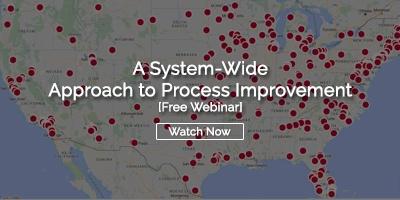 Business process improvement (BPI) is the systematic approach of analyzing, optimizing, and enhancing existing business processes to achieve better efficiency, effectiveness, and overall performance. It involves identifying areas for improvement, implementing changes, and monitoring the outcomes to drive positive results within an organization.
Business process improvement (BPI) is the systematic approach of analyzing, optimizing, and enhancing existing business processes to achieve better efficiency, effectiveness, and overall performance. It involves identifying areas for improvement, implementing changes, and monitoring the outcomes to drive positive results within an organization.
The goal of business process management is to streamline workflows, eliminate inefficiencies, reduce costs, enhance quality, and improve customer satisfaction. It optimizes processes by identifying and eliminating non-value-adding activities, minimizing waste, and enhancing productivity.
This process improvement guide explores the benefits of structured business process improvement, outlines some of the most widespread business process methodologies, and introduces several popular tools and techniques.
What are the benefits of business process improvement?
Effective business process improvement (BPI) offers several benefits to organizations. Here are some key advantages:
Increased Efficiency
BPI focuses on streamlining processes, eliminating bottlenecks, and reducing non-value-adding activities. By optimizing workflows, organizations can improve productivity, minimize delays, and reduce the time required to complete tasks. This increased efficiency allows for faster delivery of products or services, improved response times, and better resource utilization.
Cost Reduction
BPI helps identify and eliminate wasteful activities, redundancies, and unnecessary steps within processes. By reducing waste and optimizing resource allocation, organizations can achieve cost savings that produce a positive ROI for continuous improvement. This includes lowering operational expenses, minimizing rework or errors, and optimizing inventory levels. Cost reduction contributes to improved profitability and financial performance.
Enhanced Quality
BPI emphasizes quality improvement by identifying and addressing the root causes of defects, errors, or customer dissatisfaction. Organizations can reduce errors, improve accuracy, and enhance the overall quality of products or services by implementing standardized processes, error-proofing mechanisms, and quality control measures. Improved quality leads to higher customer satisfaction and loyalty.
Employee Engagement and Empowerment
BPI involves employees at all levels of the organization, encouraging their active participation in process improvement initiatives. Engaged employees feel empowered to contribute their ideas, knowledge, and expertise to enhance processes. This involvement in improvement projects fosters a sense of ownership, boosts morale, and strengthens teamwork. Engaged employees are more motivated, productive, and committed to achieving organizational goals.
Key BPI Methodologies
Organizations have developed several business process improvement frameworks that offer a consistent way of thinking about improvement opportunities. They help ensure that all employees apply the same principles and work toward the same goals.
Six Sigma
The Six Sigma methodology is a data-driven approach to business process improvement that aims to minimize defects, errors, and process variations. It reduces process variation and improves performance to achieve higher quality and customer satisfaction.
The goal is to achieve a level of process performance that is six standard deviations away from the mean, representing a defect rate of 3.4 parts per million, hence the name "Six Sigma."
Organizations across various industries have widely adopted the Six Sigma methodology to improve quality, reduce defects, enhance customer satisfaction, and achieve operational excellence. It provides a structured framework for organizations to systematically identify, analyze, and improve their business processes, leading to better performance and bottom-line results.
DMAIC Framework
DMAIC is a problem-solving methodology used in process improvement and quality management. The acronym stands for Define, Measure, Analyze, Improve, and Control. It is closely linked with the Six Sigma approach, which strives to minimize defects, variations, and waste in business processes.
Define: The first step in Six Sigma is clearly defining the problem or improvement opportunity. This involves identifying customer requirements, establishing project goals, and defining metrics to measure success.
Measure: In this step, data is collected and analyzed to measure the current state of the process and identify key performance indicators (KPIs). This includes gathering baseline data, process mapping, and conducting statistical analysis to understand process performance and identify areas of improvement.
Analyze: The analysis phase involves in-depth data analysis to identify the root causes of process issues or variations. Tools such as Pareto charts, cause-and-effect diagrams, and hypothesis testing are used to identify factors contributing to the problem and prioritize improvement opportunities.
Improve: In this phase; potential solutions are developed and tested. Improvement strategies may include process redesign, automation, standardization, or the implementation of best practices. Experiments are conducted to validate the effectiveness of proposed solutions, and process modifications are made to achieve the desired improvements.
Control: The control phase focuses on sustaining the improvements achieved. Control measures and monitoring systems are put in place to ensure that the process remains stable and continues to deliver the desired results.
Sustain: The final phase of Six Sigma is to embed the improvements into the organization's culture and processes. This involves providing training, creating documentation, and implementing knowledge-sharing systems to ensure that the improved procedures are consistently followed.
Lean Six Sigma
Lean Six Sigma is a robust methodology combining Lean manufacturing principles and Six Sigma to achieve operational excellence, process improvement, and waste reduction in organizations. It brings together the efficiency-focused approach of Lean and the quality-focused approach of Six Sigma to create a comprehensive framework for driving performance improvements.
When combined, Lean and Six Sigma complement each other and offer a comprehensive approach to process improvement. Lean provides the tools and techniques for waste reduction, while Six Sigma brings the statistical rigor and problem-solving methodologies to identify and address process variations and defects.
Organizations can significantly improve process efficiency, quality, customer satisfaction, and overall performance by integrating Lean and Six Sigma. Lean Six Sigma enables organizations to identify and eliminate waste, optimize process flow, reduce defects and errors, enhance productivity, and create a culture of continuous improvement.
Business Process Reengineering (BPR)
Business Process Reengineering (BPR) is a management approach involving the radical redesign and transformation of business processes to improve performance, efficiency, and customer value significantly. It goes beyond incremental improvements and aims to rethink and revamp existing processes to achieve breakthrough results.
BPR involves questioning and challenging existing practices, structures, and assumptions to identify opportunities for radical improvement. It emphasizes the fundamental rethinking of how work is performed, often leveraging technological advancements, automation, and best practices. The goal is to improve quality, speed, cost-effectiveness, and customer satisfaction dramatically.
Lean Management
Lean management is an approach to managing and optimizing processes, resources, and people to create customer value while minimizing waste and inefficiencies. It is derived from the principles and practices of Lean manufacturing, initially developed by Toyota, and has since been applied to various industries and sectors.
At its core, lean management strives to maximize customer value by continuously improving processes and eliminating activities that do not add value. It emphasizes the importance of creating a culture of continuous improvement, employee engagement, and waste reduction.
Kaizen
Kaizen, a Japanese term meaning "change for the better" or "continuous improvement," is a concept and philosophy that centers on gradual, ongoing enhancements in various aspects of life, encompassing business processes, products, services, and personal growth.
Following its origin in Japan, Kaizen gained widespread recognition in the post-World War II era when Japanese industries, including Toyota, adopted this approach to elevate their manufacturing practices. It strongly emphasizes cultivating a culture of perpetual improvement, involving all members of an organization, from top executives to frontline workers, in the relentless pursuit of excellence.
The fundamental premise of Kaizen lies in the understanding that even minor, incremental improvements, consistently applied over time, can yield significant positive transformations. It encourages individuals and businesses to actively seek out opportunities for advancement, identify inefficiencies, and implement practical solutions.
Total Quality Management (TQM)
Total Quality Management (TQM) is a management approach and philosophy that focuses on achieving and maintaining high levels of quality in all aspects of an organization's operations. It encompasses a set of principles, practices, and tools aimed at continuously improving the quality of products, services, and processes.
The core principles of Total Quality Management include:
- Customer Focus
- Continuous Business Process Improvement
- Employee Involvement
- Process Orientation
- Data-Driven Decision Making
- Supplier Relationships
BPI Tools and Techniques
Business process tools and techniques are utilized to analyze, map, optimize, and manage the various components of a business process to enhance efficiency, quality, and overall performance.
Process mapping and flowcharting
Business process mapping and flowcharting are techniques used to visually represent and analyze the sequence of steps, activities, and interactions within an existing process. Process mapping involves creating a visual diagram that illustrates the flow and relationships between various process elements, while flowcharting uses symbols and arrows to depict the sequential flow of activities, decisions, and inputs/outputs within a process. These tools help in understanding, documenting, and improving processes, enabling organizations to identify inefficiencies, bottlenecks, and opportunities for optimization.
Value stream analysis
Value stream analysis, or value stream mapping, is a methodology used to analyze and optimize the flow of materials, information, and activities required to deliver a product or service to customers. It involves creating a visual representation of the entire value stream, from raw materials to the end customer, and identifying areas of waste, inefficiencies, and opportunities for improvement. By examining the value stream, organizations can identify and eliminate non-value-added activities, streamline processes, reduce lead times, and enhance overall value delivery to customers.
Root cause analysis
Root cause analysis is a systematic approach used to identify and understand the underlying causes of a problem or issue. It involves investigating the factors that contribute to an undesirable event or situation. By digging beyond the immediate symptoms, root cause analysis aims to identify the fundamental or systemic causes that, if addressed, can prevent the problem from recurring. This analysis typically involves asking "why" multiple times to uncover the underlying causes and using various techniques such as brainstorming, data analysis, process mapping, and cause-and-effect diagrams. The insights gained from root cause analysis can help organizations implement targeted solutions, improve processes, and prevent future problems.
Performance metrics and key performance indicators (KPIs)
Performance metrics and key performance indicators (KPIs) are tools used to measure and assess the performance and progress of organizations, departments, teams, or individuals. They provide quantitative or qualitative data that indicates how effectively objectives and targets are being achieved.
Performance metrics are specific measurements used to evaluate various aspects of performance. They can be financial, operational, customer-focused, or related to quality, productivity, efficiency, or other relevant areas. Performance metrics provide objective data that can be tracked and analyzed to gauge performance levels and identify areas for improvement.
Key performance indicators (KPIs) are a subset of performance metrics considered critical to an organization's success or specific objectives. KPIs are often strategic and directly linked to organizational goals and targets. They help monitor progress, drive performance improvement, and facilitate decision-making at various levels of an organization.
Regular monitoring and analysis of performance metrics and KPIs enable organizations to gain insights into their performance, identify areas of strength or weakness, and make data-driven decisions to optimize performance and drive improvement efforts. Organizations can stay focused on their objectives by setting clear targets, measuring progress against them, and continuously striving for better results.
Examples of business process improvement
Business process improvement is an effective way to improve results regardless of the type of organization. A few examples of how BPI is implemented include:
Manufacturing Industry
The principles of Lean Manufacturing, such as value stream mapping, waste reduction, and continuous improvement, are integral to business process improvement in the manufacturing industry. Organizations can achieve greater efficiency, reduced lead times, and improved resource utilization by analyzing and optimizing production processes, eliminating non-value-added activities, and streamlining workflows.
Business process improvement aligns with implementing quality management systems such as ISO 9001 in the manufacturing industry. These systems provide a framework for establishing robust quality control processes, monitoring performance, identifying non-conformities, and driving continuous improvement across all manufacturing processes.
Healthcare Sector
Business process improvement plays a crucial role in healthcare by optimizing operational efficiency, enhancing patient care, and improving healthcare delivery.
BPI techniques help streamline administrative processes such as patient registration, appointment scheduling, billing, and insurance claim processing. By eliminating redundant steps, reducing paperwork, and implementing digital solutions, healthcare organizations can enhance efficiency, reduce waiting times, and improve patient satisfaction. Business process improvement is also utilized to optimize patient flow and care coordination within healthcare facilities. It involves analyzing the entire patient journey, identifying bottlenecks, and implementing strategies to improve the movement of patients through various departments and stages of care.
Financial Services
Business process improvement plays a significant role in financial services by enhancing operational efficiency, improving customer experience, and ensuring regulatory compliance.
Business process improvement techniques help streamline customer onboarding, including account opening, KYC (Know Your Customer) procedures, and documentation. Financial institutions can reduce paperwork, enhance data accuracy, and improve the overall customer experience by optimizing these processes.
Retail Sector
Business process improvement enables retailers to improve operational effectiveness, reduce costs, enhance customer satisfaction, and stay competitive in the dynamic retail landscape. By continuously evaluating and refining their processes, retailers can adapt to changing consumer demands, improve profitability, and deliver exceptional shopping experiences.
Organizations can reduce stockouts, minimize excess inventory, and improve inventory turnover rates by implementing accurate demand forecasting, optimizing replenishment processes, and leveraging technology solutions such as RFID (Radio Frequency Identification).
Conclusion
By integrating business process improvement methodologies and practices into operations, organizations can achieve improved productivity, increased product quality, reduced waste and defects, enhanced customer satisfaction, and greater competitiveness in the market. It enables organizations to adapt to changing market demands, optimize resources, and drive sustainable growth.




Add a Comment